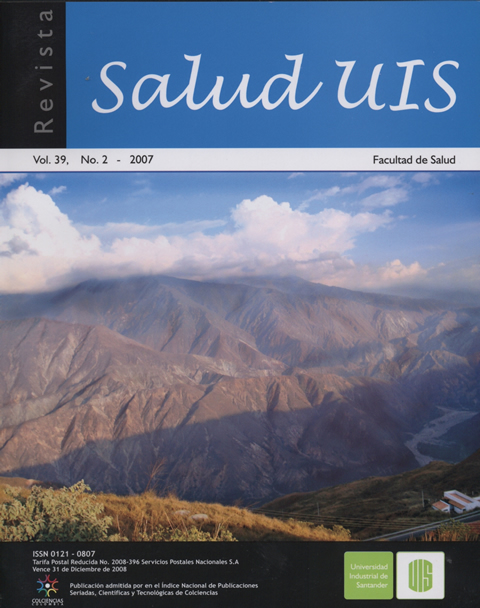Resumo
RESUMEN
ANTECEDENTES: La albúmina es un coloide costoso, usado en condiciones que cursan con hipoalbuminemia y disminución de la presión oncótica intravascular. Su utilidad en lactantes con desnutrición edematosa no ha sido estudiada sistemáticamente.
OBJETIVO: Evaluar el uso de la albúmina en el tratamiento de niños hospitalizados con desnutrición edematosa.
MATERIALES Y MÉTODOS: Se evaluó una cohorte retroprospectiva de 69 niños con diagnostico de desnutrición edematosa. Treinta y tres habían recibido albúmina. Se compararon tasas de mortalidad entre los grupos y se evaluaron los días de hospitalización. Se construyeron gráfcas de sobrevida y un modelo multivariado para determinar el efecto de la albúmina sobre la mortalidad. Los participantes estuvieron internados entre enero de 2001 y diciembre de 2006 en el Hospital Universitario de Santander.
RESULTADOS: Quienes recibieron albúmina presentaron nivel de glucosa más bajo y menor proporción de uncinarias. La estancia hospitalaria fue mayor entre quienes recibieron albúmina. La tasa mortalidad en los 69 niños fue de 19 casos por 1000 días de seguimiento. La diferencia de tasas fue 6,2 casos (IC95% - 23 - 10) por cada 1000 días. El modelo explicativo de la mortalidad incluyó: uso de albúmina, HR 0,31 (IC95% 0,11 - 0,89); diagnóstico de sepsis, HR 18,5 (IC95% 3,9 - 83,8) y alto nivel plasmático de albúmina al ingreso (HR 0,35; IC95% 0,13 - 0,97).
CONCLUSIONES: La albúmina humana parece mejorar la sobrevida de lactantes con desnutrición edematosa. Sin embargo, por su costo y, dada la importancia que tendría la presencia de infecciones severas, su utilización rutinaria no debe recomendarse hasta que se realice un ensayo clínico adecuadamente diseñado.
Palabras claves: albúmina, desnutrición edematosa, hipoalbuminemia
ABSTRACT
ANTECEDENTS: Albumin is an expensive colloid, used in conditions with hypoalbuminemia and diminution of the intravascular oncotic pressure. Its utility in suckling babies with edematous undernourishment has not been systematically studied.
OBJECTIVE: To evaluate the use of albumin in the treatment of children hospitalized with edematous undernourishment.
MATERIALS AND METHODS: A retroprospective cohort was evaluated of 69 children with diagnose of edematous undernourishment. Thirty and three had received albumin. Rates of mortality between the groups were compared and the day s of hospitalization were evaluated. Survival graphs were constructed and a multivaried model to determine the effect of albumin on mortality. Participants were hospitalized between January of 2001 and December of 2006 in the University Hospital of Santander.
RESULTS: Patients which received albumin displayed lower glucose level lower and smaller proportion of uncinarias. The hospitalization time was greater in those which received albumin. The rate of mortality in 69 children was of 19 cases each 1000 days of follow up. The rates difference of rates was 6 cases (IC95% - 23 - 10) by every 1000 days. The explanatory model of mortality included: albumin use, HR 0,31 (IC95% 0,11 - 0,89); diagnosis of sepsis, HR 18,5 (IC95% 3,9 - 83,8) and elevated albumin plasmatic level at their admission (HR 0,35; IC95% 0,13 - 0,97).
CONCLUSIONS: Human albumin seems to improve the survival of suckling babies with edematous undernourishment. Nevertheless, because of its cost and, given the importance that would have the presence of severe infections, its routine use it is not yet recommended until a suitably clinical trial is designed.
Keywords: albumin, edematous undernourishment, hypoalbuminemia.
Se autoriza la reproducción total o parcial de la obra para fines educativos, siempre y cuando se cite la fuente.
Esta obra está bajo una Licencia Creative Commons Atribución 4.0 Pública Internacional.
